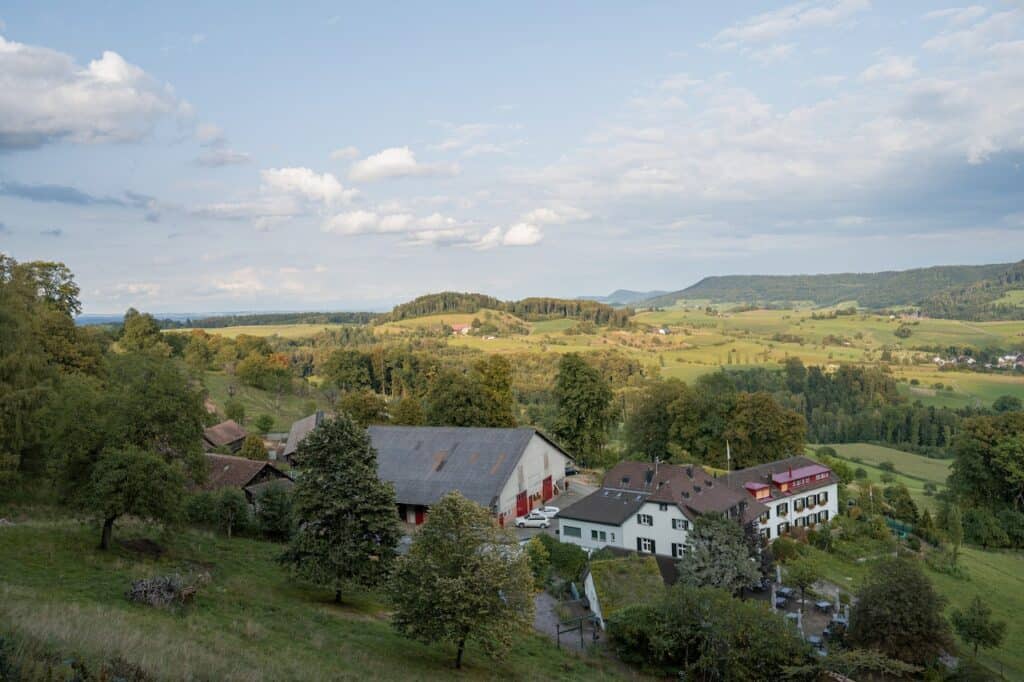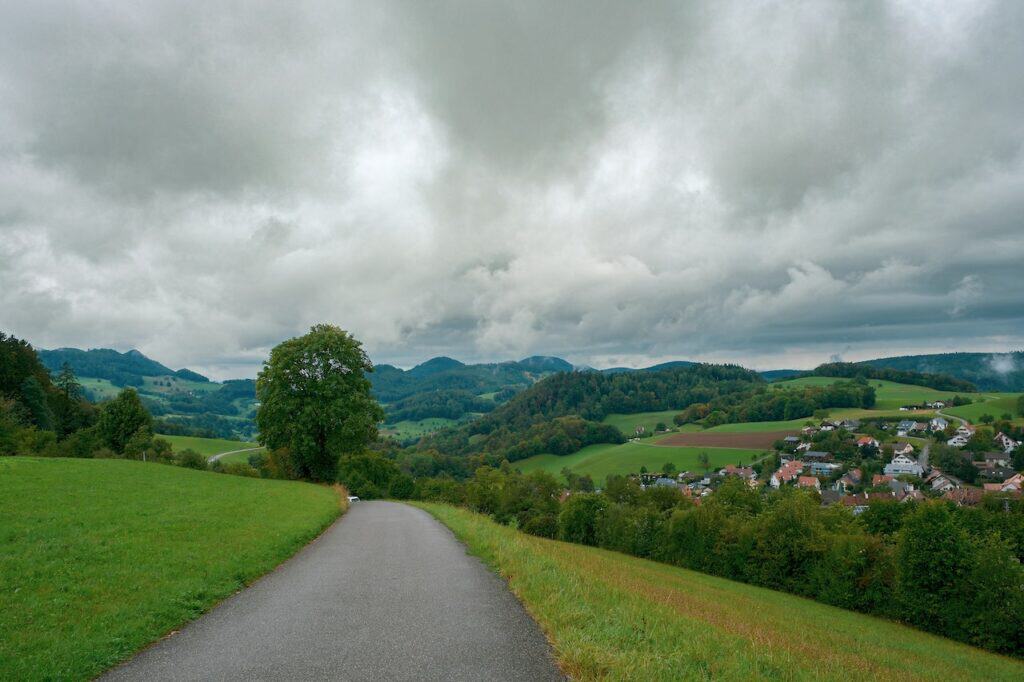The modern world has witnessed an upsurge in the popularity of coliving spaces, particularly in bustling urban environments. Originating as a solution to the mounting urban housing crisis and a response to a growing desire for community-based living, coliving has quickly become a staple within urban real estate developments. Europe’s rich history and rapid modernization have attracted €2.6 billion in investment over the next three years, particularly from millennials and the working class.
Yet, as urban centers become more saturated and the demand for healthier, more sustainable living arrangements grows, a new trend emerges: coliving in rural areas. A shift from the towering skyscrapers and crowded streets of cities, rural coliving offers an enticing blend of community living, but with the serenity and vast expanses that only the countryside can provide. This evolution not only signifies a rethinking of what community means but also highlights the adaptability of the coliving model. As real estate developers and those curious about the future of living arrangements turn their gaze towards the countryside, it’s essential to understand the potential, benefits, and intricacies of rural coliving.
The Appeal of Rural Living
When we picture rural life, visions of vast landscapes, fresh air, and the gentle rustle of leaves might spring to mind. The appeal of rural living goes beyond just its picturesque settings. One of the primary attractions is the tranquility that rural areas offer. Far removed from the constant hum of urban centers, rural regions offer residents peace and quiet that’s hard to come by in cities. This tranquility provides a more direct connection to nature, allowing individuals to experience the seasons in their full glory, witness wildlife in their natural habitats, and engage in outdoor activities that cities simply cannot offer.
The slower pace of life in rural settings is another significant advantage. Without the constant rush typical of urban environments, individuals have more time for reflection, personal projects, and family. This enhances mental well-being and reduces the stresses often associated with city living. In a research funded by The National Geographic Society has shown that consistent exposure to nature and reduced noise pollution can greatly improve mental health, making rural living a preferred choice for those seeking a holistic lifestyle.
Financially, rural living often presents an advantage. Living expenses, from property prices to daily necessities, are generally lower than in bustling urban centers. Especially in Europe, where cities like Luxembourg, London, and Dublin see soaring real estate prices, rural areas offer a more affordable alternative without compromising quality of life.
In essence, rural living is more than just a choice of location; it’s a lifestyle choice. It’s about prioritizing mental well-being, financial stability, and a closer relationship with nature over the conveniences and chaos of urban life. As the world grows ever more interconnected and cities continue to expand, the allure of the countryside remains steadfast and ever-enticing.

Advantages of Coliving in Rural Areas
Coliving, traditionally associated with urban centers, finds a refreshing interpretation in rural settings. While the concept remains centered around community living and shared resources, the rural backdrop offers unique advantages that are both compelling and sustainable. Here are some of the distinct benefits of coliving in the countryside:
Shared Resources and Costs
Central to coliving is the efficient use of resources. Within rural settings, this principle doesn’t just simplify the sharing of utilities and rent but extends to communal areas such as gardens, lounges, and kitchens. Resources, potentially scarcer or pricier due to transportation challenges, are optimized, ensuring high living standards. Furthermore, collective grocery purchases, especially of local produce, cut costs and reduce the carbon footprint.
Building Communities
Rural coliving inherently fosters a potent sense of community. With smaller groups and mutual responsibilities, relationships here are more profound and interconnected. These spaces transform into more than mere residences; they evolve into supportive networks vital in remote rural areas, turning neighbors into extended families.
Sustainability
Rural environments align seamlessly with sustainable initiatives, a cornerstone of modern coliving. With ample land available, communities often adopt farming, promoting self-sustenance and cutting external dependencies. The vast expanses make integrating renewable energy solutions like solar panels or wind turbines viable. Moreover, waste management adopts a greener approach through community-led composting and recycling.
Skill-sharing and Education
Rural coliving spaces burgeon into educational hubs, thanks to the diverse skills residents bring. From hands-on skills like organic farming to contemporary ones like digital marketing, these settings foster continuous learning. Workshops, both formal and impromptu, become a staple, ensuring growth and knowledge exchange.
Enhanced Work-Life Balance
The serenity of rural areas complements the growing trend of remote work. Here, professionals can operate amidst tranquility, punctuating work with rejuvenating breaks in nature. The absence of long commutes, a primary urban stressor, gifts residents added personal hours, often leading to heightened productivity.
Supporting Local Economies
Coliving communities, by integrating with local vendors, artisans, and businesses, play a pivotal role in invigorating the local economy. Embracing local goods, leveraging regional services, or initiating collaborative community ventures fosters a harmonious, beneficial relationship between the coliving establishment and its surrounding locales.
Rural coliving is not merely a concept transplant but a refined fusion of communal living values with rural life’s distinct attributes. As challenges like urban overpopulation and environmental concerns mount, rural coliving is a multifaceted solution, blending community, sustainability, and rural charm.

Challenges and How to Overcome Them
While the advantages of rural coliving are manifold, like any novel concept, it comes with its own challenges. Understanding these hurdles and strategizing effective solutions is paramount for the successful establishment and longevity of rural coliving spaces.
Infrastructure
Rural areas, especially in parts of Europe, might not have the same level of infrastructure development as their urban counterparts. Challenges like inconsistent power supply, limited water resources, or even underdeveloped roads can pose problems.
Solution
Investing in off-grid solutions, like solar power systems and rainwater harvesting, can reduce dependence on external infrastructure. Engaging with local governments or collaborating with neighboring communities to improve access routes can also pave the way for better infrastructural support.
Accessibility
One significant concern about rural living is the distance from essential services like hospitals, schools, or even marketplaces.
Solution
Establishing a community vehicle or shared transportation system can ensure residents have timely access to crucial services. Additionally, telemedicine services or online educational platforms can be integrated to bridge the accessibility gap.
Cultural Integration
Introducing a new way of living in traditionally settled communities can lead to potential friction or misunderstandings between coliving residents and local inhabitants.
Solution
Initiating community engagement programs, open dialogues, and cultural exchange events can foster understanding and camaraderie. New residents should be oriented about local customs and traditions, ensuring they integrate respectfully into the existing community.
Regulatory and Land-Use Concerns
Different regions have varying land-use regulations, zoning laws, and property rights that might not always align with the vision of a coliving space.
Solution
Thorough research and legal consultation are crucial before establishing a rural coliving space. Collaborating with local authorities, understanding the region’s regulations, and ensuring compliance will mitigate potential legal challenges.
Digital Connectivity
The digital age mandates reliable internet connectivity, especially for remote workers. However, rural regions might not always offer consistent or high-speed internet.
Solution
Investing in satellite internet or collaborating with service providers to install local towers can ensure residents remain digitally connected. Given the rising demand for connectivity, many service providers are expanding their reach, making it feasible to negotiate tailored solutions.
Safety Concerns
Less populated areas sometimes raise safety concerns, especially during emergencies or natural calamities.
Solution
Establishing a well-trained community emergency response team and ensuring regular safety drills can prepare residents for unforeseen events. Collaborating with nearby villages or towns for shared emergency services can also enhance safety measures.
With proper planning, collaboration, and a genuine understanding of the local landscape and the essence of coliving, it is possible to mold these challenges into opportunities, ensuring that rural coliving flourishes as a sustainable and harmonious living model.

Potential Impact on Urban Migration
The swell of urbanization in European regions has its roots in the pursuit of better economic prospects, more comprehensive amenities, and varied cultural experiences. However, the ensuing strain on city infrastructures is palpable, with housing crises, traffic congestion, and escalating pollution levels becoming daily challenges. As rural coliving gains traction, its potential to recalibrate urban migration trends warrants consideration.
Reduction in Urban Pressure
Historically, the magnetism of urban centers has been their promise of opportunity and modern comforts. With rural coliving offering comparable amenities and the added allure of nature, it can pull a segment of the population away from cities. Such a shift could lead to a more balanced demand for urban housing and services, granting cities a breather and allowing for systematic, sustainable expansion.
Economic Balance
For a long time, cities have served as economic hubs, attracting individuals looking for profitable opportunities. On the other hand, rural areas are often labeled as economically inactive. The advent of rural coliving can change this narrative. As these spaces attract professionals and remote workers, there’s an infusion of economic activity in the countryside. This infusion can catalyze the creation of ancillary businesses, bolstering the region’s economy and bridging the economic disparity between urban and rural areas.
Environmental Relief
With their colossal populations and relentless industrial undertakings, cities are formidable environmental stress points. A demographic shift, with a considerable populace embracing rural coliving, promises two-fold relief: reducing urban pollution and propagating sustainable living practices typical of rural coliving.
Skill and Knowledge Transfer
Urban migrants are often repositories of eclectic skills and rich professional experiences. When they opt for rural coliving, there isn’t just a physical relocation; the transfer of these competencies accompanies it. Rural regions stand to gain immensely from this skill migration, benefiting from innovations and expertise that can propel local businesses, education, and even healthcare.
Redefining Growth Metrics
Success, historically measured by the vibrancy and growth of urban centers, could witness a paradigm shift. As rural coliving thrives, the metrics for evaluating a region’s prosperity might transform. No longer would success only mean towering skyscrapers and bustling streets; thriving community farms, sustainable energy solutions, and enhanced quality of rural life could become equally significant indicators of growth and development.

The Future of Rural Coliving
As the modern world advances, so does the potential for innovative living arrangements. The intersection of technology and rural coliving is promising, with vast possibilities for professionals and nature enthusiasts alike.
How Technology Can Enhance and Streamline Rural Coliving Experiences
With the integration of advanced digital infrastructures like satellite-based internet solutions, even remote rural areas can benefit from high-speed connectivity. This ensures that residents, especially remote workers, maintain consistent and efficient professional outputs.
Urban settings no longer hold a monopoly on smart homes. Rural coliving spaces can harness the Internet of Things (IoT) to optimize and streamline daily life. Whether it’s automated agricultural systems, intelligent energy management, or responsive appliances, technology stands ready to elevate the rural living experience.
Beyond daily convenience, technology can aid in sustainability efforts, from solar energy solutions to efficient water management systems. This complements the principles of rural coliving and guarantees a reduced environmental impact.
The Potential for Rural Coliving to Redefine Work-Life Balance and Remote Work Dynamics
A New Dimension to Work-Life Balance
Rural coliving brings a refreshing perspective to the concept of balance. Professionals can seamlessly transition from intensive work sessions to rejuvenating nature activities, be it gardening, hiking, or community-based projects.
Transforming Remote Work
With the widespread adoption of remote work in numerous industries, rural coliving offers a broader, more enriching canvas. Here, remote work isn’t just about location independence—it’s about being part of an ecosystem that nurtures creativity, connectivity, and community. As tech solutions continue to evolve, addressing any connectivity or collaboration challenges, the allure of rural areas as optimal workspaces for remote professionals will only grow.
Community and Collaboration
The synergy between communal living and professional collaboration can foster innovative ideas and projects. With technology enabling virtual collaborations, rural coliving spaces can become hubs where global minds converge, discuss, and innovate, all while surrounded by nature.

Embracing Tomorrow: The Promise of Rural Coliving
The landscape of housing and community living is undergoing a transformative shift. As urban centers grapple with the challenges of overpopulation, pollution, and resource strain, rural coliving emerges as a compelling alternative. By blending the serenity of countryside living with modern amenities and technology, it promises a harmonious blend of professional productivity and personal well-being.
The advantages are manifold. From shared resources leading to cost efficiency to fostering close-knit communities bound by shared experiences, the model offers a refreshing change from the conventional urban living setup. However, it’s not without its challenges, with infrastructure, cultural integration, and accessibility requiring careful navigation.
The role of technology remains pivotal, offering the potential to revolutionize the rural coliving experience and redefine traditional work norms. As remote work becomes the norm for many industries, the appeal of working from a tranquil, nature-enveloped space grows stronger.
This is a moment of opportunity for real estate developers and individuals alike—to engage with a living model that respects nature, fosters community, and embraces modernity. As we move forward, rural coliving may well set the benchmark for sustainable, community-centric living in the 21st century.
The Citylifer Perspective
We totally get that different folks prefer different strokes. While some love the buzz of the city, others are more about the chill vibes and open spaces you find out in the country. We’re advocates of city life at The Citylifer, but we’re also pretty inspired by what rural living has to offer, and we’re all about bringing a bit of that peaceful, nature-loving spirit into our city spaces.
Bringing the outdoors in
We’re really into making sure our places feel a bit like that countryside getaway, even in the middle of the city. It’s all about getting that green in there, creating spots where you can catch a breath of fresh air, have a chill chat with a neighbor, or just sit and think. We’re crafting outdoor areas that are like mini sanctuaries, right at your doorstep, bringing a bit of that rural peace into our bustling city spots.
Proximity to recreational green spaces
In addition to having green spots right where we live, we always choose locations that are a stone’s throw away from parks and fun outdoor spaces. This way, it’s easy for our residents to head out for a jog, a picnic, or just a lazy day under the sun. Plus, it’s a great way to feel connected to the community around you. We’re all about mixing the cool city vibes with some chill countryside tranquility, and being close to parks is a big part of that.
Quiet and private spaces for reflection
At The Citylifer, we get that sometimes you just need a quiet spot to think or work without any distractions. That’s why we’ve created special quiet areas in our buildings where you can find that peaceful moment, just like in the countryside. Plus, our soundproof rooms mean you can enjoy your down-time without any noise from the neighbors. It’s all about having that quiet and calm space, even in the middle of the city hustle.
Sustainable living
Taking a page from the rural lifestyle book, we’re going all-in on the eco-friendly approach at “The Citylifer.” Our places are energy-efficient, decked out with energy-saving appliances, and we’re big on cutting down waste. We encourage our residents to join and help us so that we bring sustainable living right to the city center





